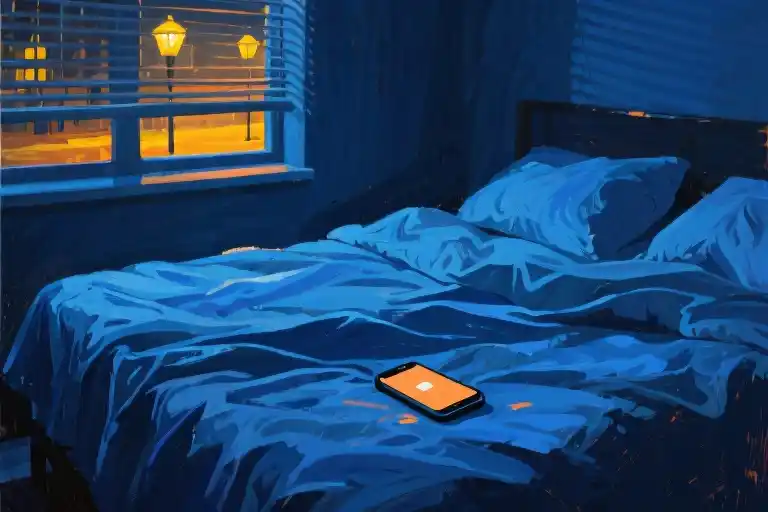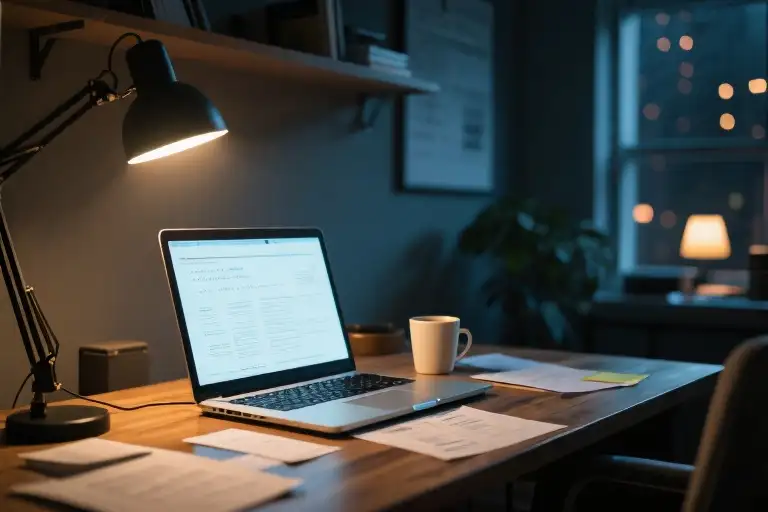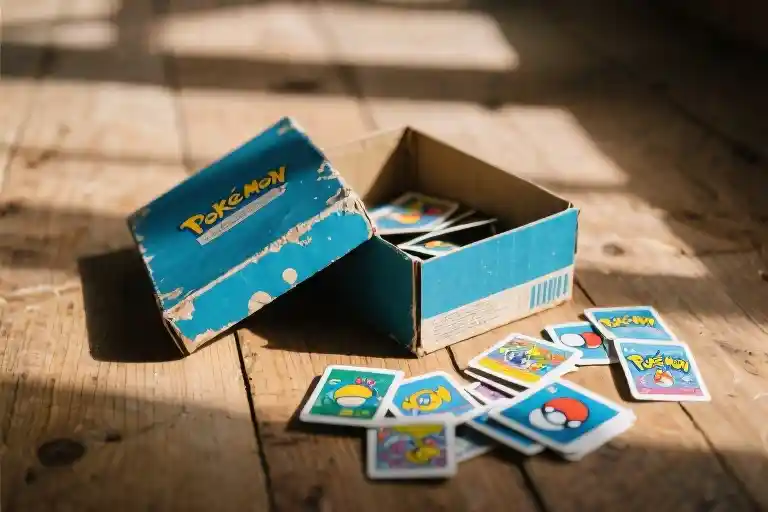The vibration cuts through the silence at 11:47 p.m., casting a blue glow across my pillow. My fingers move before my brain fully wakes—thumb sliding across the screen, spine automatically propping me up against the headboard. Another friend needing to talk. Another performance of emotional labor I’ll execute flawlessly while my own exhaustion pools beneath my ribs like forgotten rainwater.
“Hey, are you awake? I just need to talk.”
The words blur as I rub sleep-grit from my eyes. I know this script by heart: the careful listening nods (though they can’t see me), the strategic “mm-hmms” timed to encourage disclosure, the mental Rolodex flipping through therapeutic responses. When the conversation ends—always with their relieved sigh and my hollow “anytime”—the silence left behind has weight. It presses my shoulders into the mattress as I stare at the ceiling, tracing hairline cracks in the plaster that look suspiciously like question marks.
Who hears the listener’s unspoken words? When did my identity become so entwined with being everyone’s emotional safety net that I forgot to weave one for myself? The phone screen darkens, but the afterimage lingers: a dozen similar notifications from this week alone, all variations on “I need…” with no reciprocal “How are you?” in sight.
My body remembers what my mind tries to rationalize—the stiff neck from hours of attentive tilting, the jaw clenched to trap my own reactions, the way my breath shallows when absorbing someone else’s panic. These physical tells whisper what I’ve ignored for years: listening has become a one-way street where I’m both the pavement and the drain.
Three floors below, a refrigerator hums to life. The sound syncs with the realization creeping up my throat: I don’t recall the last time I sent a late-night distress text. Not because life hasn’t handed me reasons, but because somewhere between childhood playground mediations and my psychology degree, I internalized that my value lived in being unshakable. The friend who stabilizes others. The professional who contains chaos. The ADHD woman overcompensating for perceived flaws by becoming relentlessly available.
Outside, a car door slams. Someone laughs. Normal people keeping normal hours. Meanwhile, my thumbs hover over a response I’ll never send: “I’m awake. But tonight, so are my own unspoken words.”
The vibration cuts through the darkness at 11:47 p.m. — that particular frequency I’ve come to recognize as an emotional SOS. My phone screen illuminates the bedroom ceiling as I squint at the message: “Hey, are you awake? I just need to talk.”
Three dots appear immediately, signaling more words are coming. My thumb hovers over the keyboard while my body performs its well-rehearsed routine: shoulders tensing toward my ears, breath shallowing, that familiar weight settling behind my sternum. The math happens automatically — it’s been 14 hours since my last client session, 3 hours since putting my daughter to bed, 47 minutes since my own head hit the pillow.
I respond. Of course I do.
This scene replays with variations throughout my weeks. The 2 a.m. existential crisis texts from college friends. The 7:15 a.m. calls from colleagues needing pre-work pep talks. The 3:30 p.m. voicemails from relatives that begin with “I know you’re busy but…” Each interaction leaves me cataloging emotional data points like some overworked switchboard operator: Sarah’s boyfriend issues (again), Mark’s career anxiety (still unresolved), Aunt Linda’s passive-aggressive concern about my life choices (predictable).
By Friday evenings, my nervous system hums with secondhand distress. I’ve absorbed enough emotional static to power a small city — 23 hours of active listening, 17 suppressed yawns during trauma narratives, 9 instances of biting my tongue when interrupted mid-sentence. The numbers don’t lie: I’m running an unsustainable emotional labor deficit.
The hospital waiting room incident crystallized the cost. Eight weeks pregnant after previous losses, gripping ultrasound results that might change everything, when my phone buzzed with a familiar plea: “Are you okay? Actually… can I vent about something?” In that fluorescent-lit purgatory, I recognized the absurdity — holding space for others while my own world might be collapsing. The disinfectant smell mixed with my silent realization: I’d become so proficient at emotional triage that no one suspected I might need stretcher service myself.
Work amplifies the dynamic. My psychology practice processes approximately 2,300 hours of client distress annually — the equivalent of 96 continuous days of absorbed anguish. Colleagues call me “the calm in the storm”, unaware this steadiness comes at a price. Like the time I took medical leave for burnout and received exactly zero check-in messages. “You always sound so cheerful when you call in sick!” my boss chuckled later. The compliment landed like a diagnosis: I’d trained my ecosystem to see me as perpetually available, a human emotional shock absorber with infinite compression cycles.
These aren’t isolated incidents but data points in a larger pattern. The midnight messages represent just 17% of my unpaid emotional labor — the rest distributed across daylight hours in coffee catch-ups (“You give such great advice”), workplace mediation (“You’re so good with difficult people”), and family obligations (“We knew you’d understand”). My calendar quantifies the imbalance: 92% of my social interactions involve me providing support versus 8% where I receive it.
The toll manifests physically — tension headaches that trace the exact path of my temporomandibular joint from clenched teeth, adrenal fatigue that makes stairs feel like Everest ascents. My Apple Watch actually vibrates with “Unusual heart rate detected” alerts during particularly intense listening sessions. Even my dreams have become soundboards for other people’s problems, nocturnal echo chambers where I solve crises that aren’t mine.
What makes this particularly insidious is how society rewards the behavior. My “gift” for listening earned me gold stars in childhood, academic accolades, professional success. The system is rigged — we praise emotional generosity while quietly pathologizing those who admit their reserves are depleted. No wonder the transition from “good listener” to “overwhelmed sponge” happens by imperceptible degrees.
The real cost isn’t in the immediate exhaustion but in the gradual erosion of self. When you’re constantly tuned to others’ frequencies, you stop recognizing your own emotional signals. Needs become abstract concepts rather than bodily imperatives. That midnight text scenario replays because the alternative — not responding — triggers existential questions: If I’m not the listener, who am I? If I stop absorbing, will I disappear?
My phone buzzes again now as I write this. The screen flashes “Mom” — she’s early today. I watch the call go to voicemail, noticing how my palm sweats against the mattress. This small act of resistance feels simultaneously terrifying and revolutionary. The ceiling above me doesn’t collapse. The world continues spinning. Somewhere in the silence, I hear a new sound: my own breath, no longer competing for airtime.
The Making of an Emotional Sponge
Twelve years old on a playground, and I already knew the script. Two friends arguing over a jump rope, voices rising, tears threatening. Without thinking, I stepped between them—not as another kid, but as a mediator. ‘Maybe we can take turns?’ I suggested, my small hands patting backs. When the tension dissolved into giggles, something clicked inside me: being needed felt like love.
The Childhood Blueprint
That playground moment became my unconscious template for connection. At family gatherings, I’d notice Aunt Linda’s stiff shoulders before she did, offering to massage them. In high school, my locker became a confessional booth where friends dumped their heartbreaks between classes. Each ‘thank you’ etched deeper the belief: my worth lived in how well I absorbed others’ pain.
ADHD traits amplified this. My brain’s radar for emotional cues was always scanning—a survival mechanism I’d developed to compensate for missing social subtleties. Where neurotypical kids might shrug off a friend’s bad mood, I’d obsess: ‘Was it something I did?’ Fixing their emotions became my full-time job.
Professional Reinforcement
Becoming a psychologist seemed natural. What better career for someone who’d spent a lifetime studying people’s emotional weather patterns? But the training did something dangerous: it weaponized my natural tendencies. Active listening techniques became armor against my own needs. ‘This isn’t about you,’ supervisors would remind during case reviews, and I took that mantra to heart—too much heart.
My calendar filled with back-to-back sessions: a grieving widow at 10am, a suicidal teen at 11:30, a couple screaming through divorce at 3pm. I’d leave work with phantom pains in my body—my shoulders carrying clients’ tension headaches, my stomach knotted with their anxiety. Yet when colleagues asked how I was managing, my automatic response: ‘I’m fine.’ The better I got at my job, the better I got at disappearing.
The ADHD Mask
Before diagnosis, I thought my exhaustion was moral failure. Why couldn’t I ‘self-care’ like other therapists? Why did basic tasks—laundry, meal prep—feel impossible after emotional workdays? I developed elaborate compensation systems:
- Mirroring Mannerisms: Adopting clients’ speech patterns to conserve cognitive energy
- Scheduled Breakdowns: Allowing myself to cry… but only during Wednesday lunch breaks
- Productivity Guilt: Using people-pleasing as motivation (‘If I don’t finish notes tonight, I’ll inconvenience the receptionist’)
The cruelest irony? My ADHD hyperfocus made me exceptionally good at emotional labor. I could sit perfectly still for 50-minute sessions, attuned to every microexpression. But this came at catastrophic cost—like running a marathon while holding my breath.
The Breaking Point
It happened during what should’ve been a routine session. A client described their childhood abuse, and suddenly I wasn’t in my office chair but back on that playground—except now I was all the children: the hurt ones, the angry ones, the invisible mediator. My body temperature spiked. The clock’s ticking morphed into a countdown. When the session ended, I locked myself in the staff bathroom, pressing icy wrists to my neck, whispering the grounding techniques I taught clients but never used myself.
That night, I Googled ‘therapists who can’t handle emotions’ and found an article about ADHD emotional dysregulation. The screen blurred as I read about limbic system overwhelm, about how neurodivergent brains often lack the filters that buffer others from emotional overflow. For the first time, I considered: maybe I wasn’t failing at boundaries. Maybe I’d been trying to build them without neurological scaffolding.
Unraveling the Threads
Understanding the ADHD connection changed everything. Those ‘overly sensitive’ labels from childhood? A nervous system wired to process emotions in high definition. The exhaustion after socializing? Not introversion, but the colossal energy expenditure of masking. Even my ‘gift’ for mediation made new sense—I wasn’t wise beyond my years; I was a child running on emergency empathy rations.
This reframe didn’t erase the damage, but it gave me language to start healing. I began noticing patterns:
- Time Distortion: Losing hours to others’ problems while my own needs felt ‘not urgent enough’
- Empathy Overdraft: Taking on friends’ crises like they were my bank loans
- Guilt Physics: The absurd calculus where saying ‘no’ created more stress than saying ‘yes’
Most painfully, I saw how I’d curated relationships that reinforced this dynamic. The friend who only called during her 2am panic attacks. The cousin who treated me like her personal Google search bar for trauma advice. Even some colleagues who’d say, ‘You’re so good with difficult clients—can you take this case?’ as if my comfort didn’t matter.
Rebuilding the Sponge
The unlearning happened in small moments:
- At work: Setting a timer between sessions to whisper, ‘What do I need right now?’ before asking about the next client
- With friends: Practicing scripts like, ‘I care about you, but I’m not the right person for this conversation’
- Alone: Finally using those oracle cards for myself, learning to trust my own intuition as much as others trusted it
It wasn’t about becoming less caring—but about redirecting some of that care inward. Like realizing I’d been handing out life jackets while drowning myself.
Now when I recall that playground moment, I see it differently. Not just the birth of a helper, but of a child who deserved someone asking, ‘Who’s taking care of you?’ That’s the question I’m learning to answer—one boundary, one breath, one unmasked truth at a time.
The Unmasking: ADHD as a Lens, Not a Label
My hands trembled holding the diagnostic report – not from fear, but from visceral recognition. When the psychiatrist said “ADHD,” it wasn’t a label that stuck; it was a lens bringing my entire life into sudden focus. Those childhood reports calling me “too sensitive”? The exhaustion after social interactions? The way I’d absorb emotions like a sponge? Suddenly, they weren’t character flaws but neurological differences waiting to be understood.
The Neuroscience of Emotional Sponges
What makes some of us involuntary emotional vacuum cleaners? ADHD brains process emotional stimuli differently. Our dopamine-seeking nervous systems amplify emotional signals, while impaired executive function struggles to filter them. Imagine living with your emotional volume knob permanently turned up while your filtering system operates on dial-up internet.
Three key neurodivergent traits explain this:
- Hyperfocus on emotional cues: We unconsciously scan for micro-expressions and tonal shifts
- Delayed emotional processing: Like a computer running too many programs, our systems overload
- Interoception differences: Difficulty distinguishing others’ emotions from our own
This isn’t pathology – it’s a different operating system. Where neurotypical brains have built-in firewalls, we have open-plan emotional offices. The magic happens when we stop trying to install incompatible software and start working with our native programming.
The Cognitive Shift: From Flaws to Features
The diagnosis triggered what I call “The Great Reframe” – a mental pivot where perceived weaknesses became recognized strengths:
| Old Narrative | New Understanding |
|---|---|
| “I’m too emotionally reactive” | “My nervous system processes stimuli more intensely” |
| “I can’t set boundaries” | “I need different recharging methods” |
| “I mask well” | “I’ve developed sophisticated coping mechanisms” |
| “I exhaust easily” | “My brain uses more energy for emotional regulation” |
This reframing changed everything. Where I once saw personal failings, I now recognize neurological differences requiring accommodation, not shame. That “overwhelm” after socializing? Not weakness – my brain legitimately working harder to process interactions. The need for solitude? Not antisocial – necessary system maintenance.
The Mask Comes Off
Unmasking began with small but radical acts:
- Delayed responses: Giving myself permission to reply “I need time to process this”
- Sensory boundaries: Wearing noise-canceling headphones in public without apology
- Energy accounting: Treating social interactions like a limited resource budget
Most transformative was understanding that my ADHD traits – the very ones I’d spent decades suppressing – contained hidden strengths. That “distractibility” in conversations? Hyperawareness of emotional undercurrents. The “overthinking”? Deep pattern recognition. What society called deficits were often just mismatches between my neurology and environmental demands.
Living in the Lens
The ADHD diagnosis didn’t “fix” me – it helped me finally see myself clearly. I stopped trying to contort into neurotypical standards and started creating space for my brain to function optimally. Some days this looks like:
- Scheduling “nothing days” after emotionally intense work
- Using physical barriers (closed doors, headphones) as sensory boundaries
- Practicing meta-awareness: “Am I absorbing someone’s emotion or is this mine?”
The greatest liberation came in realizing: boundaries aren’t rejection – they’re the foundation for sustainable connection. My relationships didn’t disappear when I stopped being endlessly available; they transformed into something more authentic. The people who mattered stayed. The ones who left? Turns out we were only ever conducting emotional transactions, not building mutual connections.
Now when I feel that familiar urge to absorb someone else’s pain, I pause and ask: “Is this mine to carry?” More often than not, the answer surprises me. The space between stimulus and response – that’s where my unmasked self lives.
Boundary Building Blocks
The Tarot Self-Dialogue: When You Need to Talk But No One’s Listening
My oracle cards sit on my desk, edges softened by years of use. When I first started using them as a teenager, it was to entertain friends at sleepovers. Now, they’ve become something far more profound—a tool for self-conversation when I’m emotionally overwhelmed but not ready to reach out.
How it works:
- The Setup: Light a candle (or just imagine one). This creates psychological space between daily chaos and this moment.
- The Question: Instead of “What does my friend need?” ask “What does this situation make me feel?”
- The Draw: Pull three cards representing:
- Current emotional state (often the Tower or Moon for ADHDers—chaos and intuition)
- Unmet need (Frequently the Hermit—we forget solitude isn’t punishment)
- Possible action (Surprisingly often Strength—not to give more, but to say ‘enough’)
What makes this different from journaling? The tactile element—shuffling cards satisfies ADHD fidgeting, while the archetypal imagery bypasses overthinking. Last Tuesday, when exhausted but receiving yet another “urgent” text, the Knight of Swords (rushing to rescue) mirrored my automatic response. Seeing it physically helped me pause.
The Single-Room Manifesto: Why Travel Boundaries Matter
“Would you mind sharing a room? It’s cheaper.”
For years, I’d say yes—then spend nights overstimulated by others’ breathing, mornings pretending I wasn’t running on two hours’ sleep. Now, my response is different:
“I actually book single rooms because I recharge alone. Let’s plan daytime adventures instead!”
Why this works for neurodivergent brains:
- Sensory Regulation: Hotel AC sounds, unfamiliar smells—shared spaces multiply stimuli
- Emotional Reset Time: ADHD emotional dysregulation needs decompression after socializing
- Practice Saying Needs Aloud: Starts with “I need my own toothpaste” builds to “I need respect”
Template for the resistant:
“I’ve learned I’m a better friend/travel companion when I have solo time. Would you be open to [compromise: adjoining rooms/mornings together]?”
The Sandwich Refusal: Saying No Without Guilt
The old me saw two options:
- “Of course I’ll organize the fundraiser!” (Internal scream)
- “Sorry, I’m busy” (Instant guilt)
The ADHD brain often misses middle ground. Here’s the recipe:
Layer 1 (Validation): “It sounds like this project really matters to you”
Layer 2 (Boundary): “I won’t be taking on organizer roles this season”
Layer 3 (Alternative): “I could [small, defined task: design one graphic/bake cookies]”
Real-life test case:
Friend: “Can you talk? My ex is texting me and I’m spiraling.”
Old Response: Cancel dinner plans to analyze texts for 3 hours
New Sandwich:
- “Breakups are so tough—I remember how that felt”
- “I’m in the middle of something tonight”
- “Want to swap voice notes tomorrow morning?”
Three Red Flags You’re in a Functional Relationship
- The Midnight Meter: If 80% of their messages come after 10 p.m., you’re a crisis hotline, not a friend
- The Memory Gap: They remember your advice verbatim but forget your birthday
- The Energy Accounting: You feel more drained than energized after interacting
The ADHD twist: We often miss these signs because:
- Rejection-sensitive dysphoria misreads boundaries as abandonment
- Hyperfocus convinces us “this time will be different”
- Time blindness makes us forget how often this happens
A trick I use: Name my relationships like WiFi networks:
- “AlwaysAvailable” (Unstable connection)
- “MutualBandwidth” (Strong signal)
- “LowBatteryMode” (Needs charging before connecting)
The Aftermath: When Boundaries Feel Like Loss
Here’s what no one warns you: Some relationships won’t survive this shift. The friend who said “hope you don’t have more kids”? We don’t talk anymore. But the silence left space for unexpected connections—like the colleague who now asks, “How are you really?” before sharing her own struggles.
ADHD brains crave novelty. Use that to your advantage:
- Reframe “loss” as “making space”: Like clearing cache so your emotional browser runs faster
- Create replacement rituals: Instead of midnight counseling, send sunrise voice memos about cool rocks you found
- Trust the dopamine: Healthy relationships eventually feel better than the old guilt-ridden ones
My oracle cards told me this morning: The Wheel of Fortune. Change isn’t just coming—it’s already here. The question is whether we’ll keep spinning it manually, or let it turn on its own.
The Midnight Echo: Rewriting the Script
The vibration comes again at 11:47 p.m. – that familiar pulse against my nightstand. But this time, my fingers don’t automatically reach for the phone. The glow of the screen reveals another “Are you awake?” text, yet something fundamental has shifted in the six months since my ADHD diagnosis. For the first time, I notice how my shoulders tense at the sound, how my breath shallows. These aren’t just notifications; they’re neurological events triggering my limbic system.
I place the phone face down, watching moonlight trace patterns on the ceiling. My therapist’s words float back: “You’ve spent decades being everyone’s emotional first responder. What happens if you let the call go to voicemail?” The question had seemed impossible then. Now, I press the “Do Not Disturb” button with deliberate curiosity rather than guilt.
The Unanswered Message as Self-Care
Three things happen in the silence that follows:
- My nervous system settles like stirred sand returning to the ocean floor
- I notice a dull headache I’d been ignoring for hours
- The world doesn’t end
This is the paradox of boundaries no one mentions – the more space I create, the more I hear my own thoughts. That persistent inner voice whispering “You should respond” begins to quiet when I ask: “Would I expect someone else to answer at midnight?” The cognitive dissonance cracks open new possibilities.
Oracle Cards & Other Acts of Rebellion
Instead of reaching outward, I pull my tarot deck from the bedside drawer. The cards have become my boundary training wheels – a way to externalize internal dialogues without involving another person. Tonight, the Three of Swords appears reversed. I journal:
“Heartbreak lifting. Old wounds weren’t mine to carry. The third sword falls away when I stop collecting everyone else’s pain.”
This ritual replaces what would have been an hour-long emotional labor session. The act feels radical in its simplicity: tending to my own psyche first.
The Ripple Effects of Radical Self-Honesty
Changes emerged gradually:
- Friends who only contacted me during crises faded away
- Colleagues began asking “How are you?” before diving into their needs
- My ADHD symptoms became more manageable with reduced sensory overload
Most surprisingly, the relationships that mattered deepened. When I finally confessed to a longtime friend about my exhaustion from her late-night crises, she apologized: “I never realized you were struggling too. Thank you for telling me.” The exchange became our new template.
Your Turn: The Draft Exercise
Tonight, try this small act of rebellion:
- When an emotionally demanding message arrives after 9 p.m.
- Type your instinctive response
- Then… leave it in drafts until morning
Observe what arises in that space between impulse and action. The guilt? The fear? The surprising relief? This simple pause begins rewiring the people-pleasing reflex.
“True connection begins when we stop performing as unbreakable monuments and allow ourselves to be human – cracks and all.”
As I turn off the light, my phone glows once more. But now I recognize the most important notification – the one I’d muted for years. It comes not from any device, but from within: a quiet “I’m here” that no midnight text can override.





